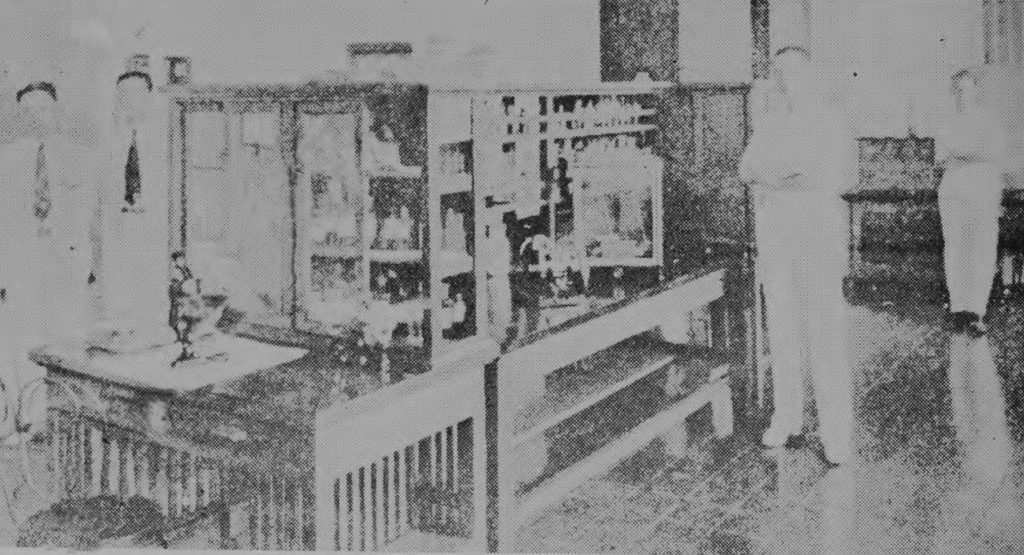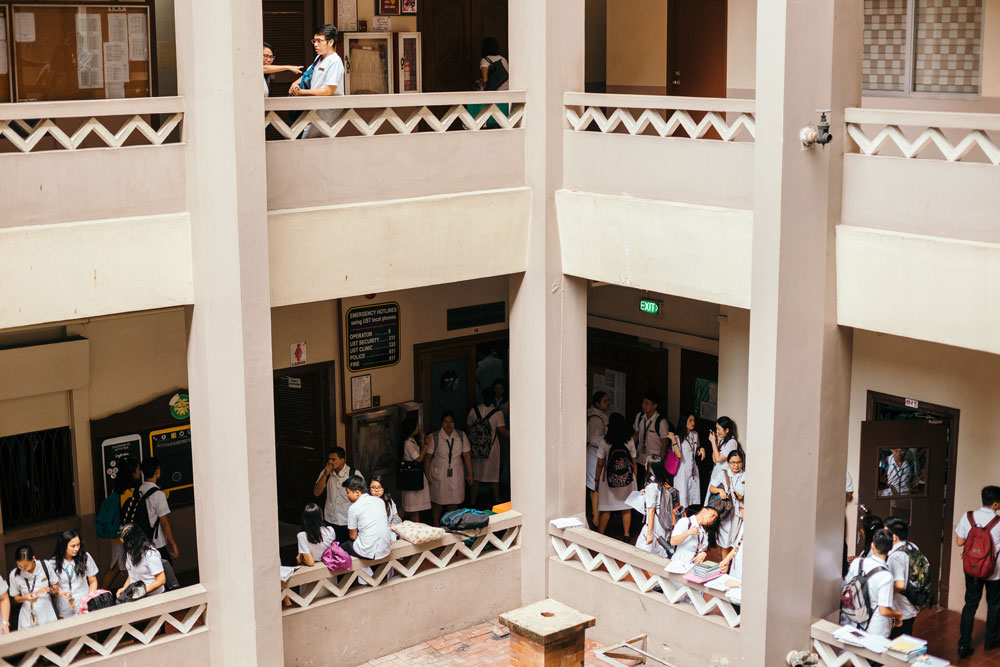Our History
The UST Faculty of Medicine and Surgery is the oldest medical school in the Philippines. The “Facultad de Medicina y Farmacia” – the beginnings of the UST Faculty of Medicine and Surgery – was formally opened on May 28, 1871 by decree of the “Superior Gobierno de Filipinas”. At that time, there were only 12 practicing doctors in the Philippines, all trained in Europe. The first group of enrollees were 9 (3 Spaniards, 6 Filipinos) and all graduated on March 10, 1877 At that time, the medical curriculum was patterned after leading European medical school (6 years, 1 year preparatory instruction, 5 years proper), and the language of instruction was Spanish.
The enrollment gradually increased with classes continuing during the Revolutionary period. It was ordered closed by the American Military Government in 1898 but was authorized to be re-opened by Gen. Arthur MacArthur in January 1901 during which time, it was separated from Pharmacy, and henceforth came to be known as the Faculty of Medicine and Surgery. The system of medical education became Americanized and English became the medium of instruction. In 1932, the first women were admitted to the Faculty, by order of the Congregation of Studies of the Holy See.
Surviving the ravages of World War II, the medical school re-opened at the new España Building in 1946 and later transferred to its present building in 1952.
For the clinical training of its students, the Faculty used the facilities of the Hospital of San Juan de Dios from 1875 to 1941, and from 1944 to 1945 and of St. Paul’s Hospital from 1941 to 1944. The UST Hospital was eventually established in 1946 and to this day, serves as the training hospital of the Faculty of Medicine and Surgery.
Throughout its long and resplendent history, through the Spanish, American and Japanese regimes and after the Second World War, the Faculty of Medicine and Surgery has undergone enormous changes to adjust itself to new and changing conditions. The changes in the past few decades have been the most dramatic, in response to the rapid advances in medicine and in medical education.

Curricular improvements were started in the 1970’s but noteworthy developmental changes marked the 80’s with the following:
- Establishment of Dr. Hubert Wong Learning Resources Unit on September 24, 1982;
- Establishment of Health Science Research Management Group in August 1984;
- Improved faculty development program through international linkages and recruitment of professorial and research chairs;
- Renovation of medical school rooms and facilities through legacies of jubilarian classes;
- Improved organizational structure with the creation of new departments notably the Department of Medical Educations (1984) and Department of Bioethics (1992);
- Curricular innovations in the form of horizontal and vertical integration and the use of problem-oriented medical rounds.
- Publication of the Handbook of Medical and Surgical Emergencies and revival of the Santo Tomas Journal of Medicine.
- Publication of the Handbook of Medical and Surgical Emergencies and revival of the Santo Tomas Journal of Medicine.
Two years later, the curriculum was reverted to the integrated approach but with adoption of some learning and evaluation strategies used in the PBL. Presently, the UST Faculty of Medicine and Surgery implements a “blended” integrated approach, adopting PBL as a teaching model in appropriate teaching-learning scenarios, utilizing its strong emphasis on self-directed and discovery learning to construct and build medical knowledge. It likewise employs direct teaching strategies whenever useful to emphasize the need for long term retention and lasting comprehension essential to medical education.
In 2010, the UST Faculty of Medicine and Surgery began exploring the possibility of incorporating ultrasound medicine in its curriculum. Correspondences were established with key institutions providing ultrasound education in medicine and subsequent workshops and lectures were conducted by pioneering ultrasound educators in the US. A “core group” of medical educators in the areas of musculoskeletal medicine and orthopedics, rheumatology, pathology, radiology and internal medicine began the seminal trainings for the eventual integration.

In 2011, a series of ultrasound hands-on workshops were conducted both to faculty members and interested medical learners who expressed interest and inclination towards this innovative idea.
In 2012, the Department of Medical Education has completed the integration of ultrasound in both the basic and clinical subjects paving the way for the first of its kind in Philippine medical education. Beginning AY 2014-15, a fully integrated ultrasound syllabus will be taught to Thomasian medical learners from first to fourth year.
In 2013, heeding the call to move towards “outcome-based education”, the UST Faculty of Medicine and Surgery is improving its facilities by establishing a “Skills and Simulation Center for the Health Sciences (SSCHS)”. The four (4) storey laboratory shall house the following facilities: Surgical Skills Facility (SSF), Life Support Science Laboratory, Ultrasound Laboratory and the Clinical Skills Facility (CSF).
In 2014, the UST Faculty of Medicine and Surgery is fast tracking its template towards full conversion to OBE in compliance with both national and international trends and requirements.
In 2016, under the leadership of Dean Jesus V. Valencia and its Regent, Fr. Angel Aparicio, O.P., the Faculty formed several committees to prepare and oversee its Sesquicentennial celebration, seeking to involve not only administration and faculty members but our alumni, students and support staff as well. The over-all committee has set a timeline and goals to accomplish for each academic year until 2021.
Sesquicentennial plans include:
1. A comprehensive review of the history of the Faculty and its early graduates including Dr. Jose Rizal and other national figures, hoping to fill out missing segments and discover new highlights in our saga as a medical school.
2. Reach out to our alumni (Thomasians comprise close to 50% of the physicians graduating from Philippine medical schools between 20,000-25,000 presently alive).
3. Accomplish at least 150 medico-surgical missions from September 2016 to May 2021.
4. Set up an alumni fund for thomasian medical students to augment existing scholarship funds of the Faculty.
5. Initiate 150 research projects from basic and clinical medical sciences for partial/final submission by May 2021. Revival of the Santo Tomas Journal of Medicine as a recognized medium to publish our research.
6. Establish global linkages with other Catholic medical schools in line with the University’s drive for internationalization.
7. Upgrade of physical facililties.


